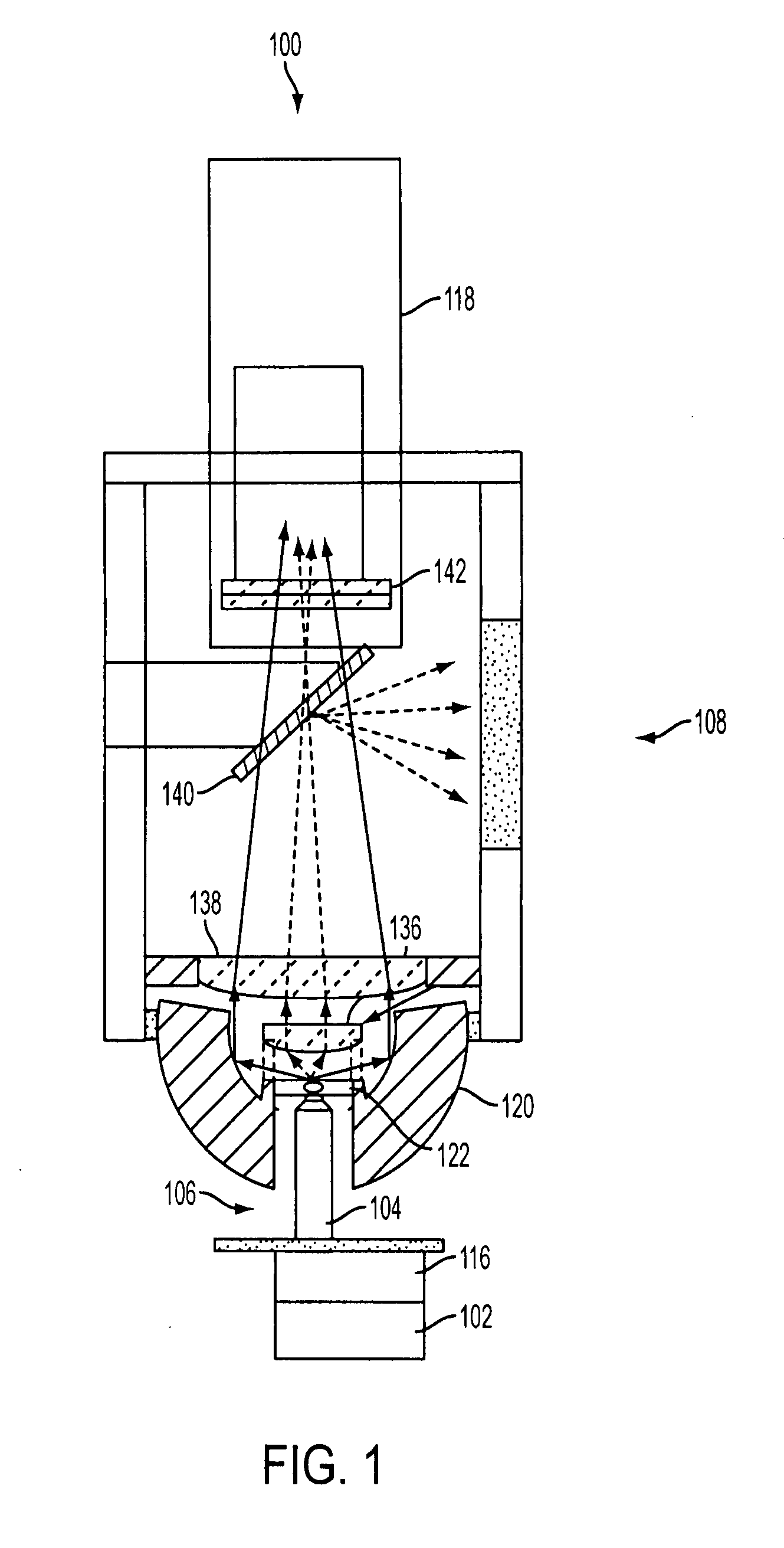Wide-area fluorescence detection system for multi-photon microscopy
a fluorescence detection and multi-photon technology, applied in the field of microscopes and microscopy methods, can solve the problem of limited excitation to the focal plane, and achieve the effect of improving light collection
- Summary
- Abstract
- Description
- Claims
- Application Information
AI Technical Summary
Benefits of technology
Problems solved by technology
Method used
Image
Examples
Embodiment Construction
[0014] In describing embodiments of the present invention illustrated in the drawings, specific terminology is employed for the sake of clarity. However, the invention is not intended to be limited to the specific terminology so selected. It is to be understood that each specific element includes all technical equivalents which operate in a similar manner to accomplish a similar purpose.
[0015]FIG. 1 is a schematic illustration of a multi-photon microscope 100 according to an embodiment of this invention. The multi-photon microscope 100 has an illumination source 102, an objective lens unit 104, a first light collection system 106 and a second light collection system 108. The objective lens unit 104 and first light collection system 106 are shown schematically in FIG. 2 on a larger scale. The objective lens 104 is arranged in an optical path of illumination light 110 from illumination source 102 (not shown in FIG. 2). Illumination light 110 from illumination source 102 is directed t...
PUM
 Login to View More
Login to View More Abstract
Description
Claims
Application Information
 Login to View More
Login to View More - R&D
- Intellectual Property
- Life Sciences
- Materials
- Tech Scout
- Unparalleled Data Quality
- Higher Quality Content
- 60% Fewer Hallucinations
Browse by: Latest US Patents, China's latest patents, Technical Efficacy Thesaurus, Application Domain, Technology Topic, Popular Technical Reports.
© 2025 PatSnap. All rights reserved.Legal|Privacy policy|Modern Slavery Act Transparency Statement|Sitemap|About US| Contact US: help@patsnap.com



